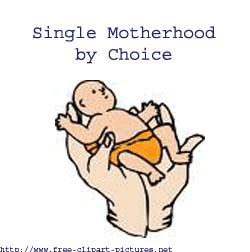Equal Rights and Opportunity Sexuality in the Family and Personal Life: Lesbian Feminism, Single Motherhood by Choice, Transgendered People, and Reproductive Rights
created by:
Annie ChoiChristine Wang
::Table of Contents::
How Single Women Become Mothers
For many women who find themselves wanting to experience motherhood but not marriage, there is a period of time when they research and consider all of their child rearing options. This idea that families can be created by the determination of women alone is no longer a radical one because of the advanced technologies and procedures in today's world.
There are many factors that have a great effect on the decision of women to become single mothers, including: using a known or anonymous donor, deciding to chance pregnancy, choosing adoption, and determining different ways in which to tell friends and family about their decision.
The first step in the journey to becoming a mother is to find a donor, begin adoption paperwork, or chance pregnancy.
These are ways to alternative family creation:
Adoption
This is the legal act of permanently placing a child with parents other than the birth parents. The two main types of adoption are international, the placement of a child outside of his birth country, and domestic, the placement of a child within his birth country. When an adoption is finalized, the child becomes the legal son or daughter of his/her parent(s).
This law of adoption created a way for strangers to become kin, and allowed adoptive parents to create familial ties according to choice. It is more difficult for single mothers to adopt children than for heterosexual couples. Many countries have strict laws with requirements that disadvantage single women trying to adopt children by making certain income levels, marital statuses, and sexualities mandatory. These are barriers to single women who are not wealthy but desire children.
Artificial Insemination
Artificial insemination (AI) is a fertilization procedure in which sperm is artificially placed into a woman's cervix (intracervical insemination) or uterus (intrauterine insemination). For single women, this process is called Artificial Insemination by Donor (AID), and the women are inseminated with the sperm of a male donor, either from a sperm bank or personal acquaintance.
In 1979, 379 physicians reported that they used this practice of artificial insemination by donor, and 10% of them used it for single women (1).
Chancing Pregnancy
Many women choose "chance pregnancy" because they want the entire experience to be natural, and have consenting men around they believe will provide good genes. These women have sexual intercourse either with a partner or during a one-night stand. They intentionally choose not to use birth control in the hopes of becoming pregnant. The men they have this relationship with are not expected to be involved in the life of the child.
Costs
These intentional methods of choosing motherhood are most prevalent among the middle to upper-class women because of the significant costs and resources needed. Adoption and artificial insemination require significant amounts of money to cover all the costs, such as legal and medical procedures. Although it might not be fiscally burdensome for women who choose to chance pregnancy, the risk that they take in having the child of a man they don't necessarily plan to spend the rest of their lives with is extremely daring and unpredictable. All in all, these single women plan and research the different methods meticulously before making the final decision to have a child.
References
(1) New England Journal Of Medicine. March 15, 1979. Vol. 300: 585-590.
